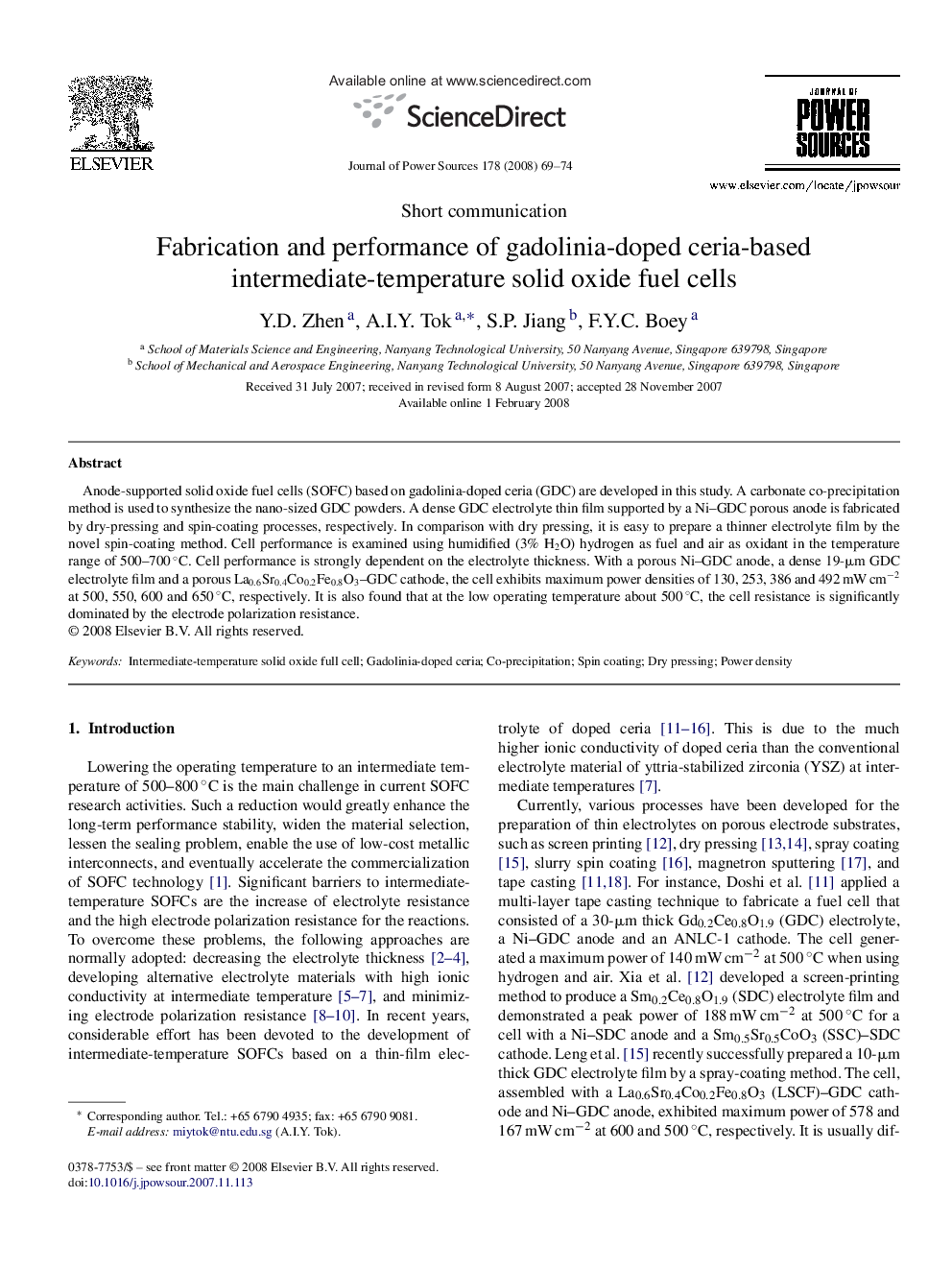| Article ID | Journal | Published Year | Pages | File Type |
|---|---|---|---|---|
| 1291498 | Journal of Power Sources | 2008 | 6 Pages |
Anode-supported solid oxide fuel cells (SOFC) based on gadolinia-doped ceria (GDC) are developed in this study. A carbonate co-precipitation method is used to synthesize the nano-sized GDC powders. A dense GDC electrolyte thin film supported by a Ni–GDC porous anode is fabricated by dry-pressing and spin-coating processes, respectively. In comparison with dry pressing, it is easy to prepare a thinner electrolyte film by the novel spin-coating method. Cell performance is examined using humidified (3% H2O) hydrogen as fuel and air as oxidant in the temperature range of 500–700 °C. Cell performance is strongly dependent on the electrolyte thickness. With a porous Ni–GDC anode, a dense 19-μm GDC electrolyte film and a porous La0.6Sr0.4Co0.2Fe0.8O3–GDC cathode, the cell exhibits maximum power densities of 130, 253, 386 and 492 mW cm−2 at 500, 550, 600 and 650 °C, respectively. It is also found that at the low operating temperature about 500 °C, the cell resistance is significantly dominated by the electrode polarization resistance.
